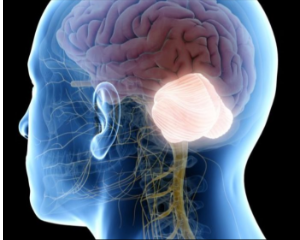 Introduction
Introduction
Ataxia describes a lack of muscle control or coordination of voluntary movements, such as walking or picking up objects. A sign of an underlying condition, ataxia can affect various movements and create difficulties with speech, eye movement and swallowing.
Persistent ataxia usually results from damage to the cerebellum which is part of the brain that controls muscle coordination. Many conditions can cause ataxia, including alcohol misuse, certain medication, stroke, tumor, cerebral palsy, brain degeneration and multiple sclerosis. Inherited defective genes also can cause the condition.
Treatment for ataxia depends on the cause. Adaptive devices, such as walkers or canes, might help you maintain your independence. Physical therapy, occupational therapy, speech therapy and regular aerobic exercise also might help.
The ataxias are a heterogeneous group of inherited and acquireddisorders, presenting either with pure ataxia or in association with other neurological and non-neurological features. The hereditary ataxias are a group of inherited disorders in which degenerative changes occur to varying extents in the cerebellum, brainstem, pyramidal tracts, spinocerebellar tracts and optic and peripheral nerves, and influence the clinical manifestations. Onset ranges from infancy to adulthood, with recessive, sex-linked or dominant inheritance. While the genetic abnormality has been identified for some, allowing diagnostic testing, this is not currently the case for many of the hereditary ataxias.1
Causes of acquired ataxia1, 3
Structural
- Brain tumor
- Brain abscess
Toxic
- Drugs: lithium, phenytoin, amiodarone, toluene, 5-fluorouracil,cytosine arabinoside
- Alcohol
- Heavy metals/chemicals: mercury, lead, thallium
Infection/post-infectious
- HIV
- Varicella zoster
- Whipple’s disease
- Miller Fisher syndrome
Degenerative
- Multiple system atrophy
- Sporadic Creutzfeldt–Jakobdisease
- Idiopathic (or sporadic)late-onset cerebellar ataxia
Inflammatory/immune-mediated
- Multiple sclerosis
- Gluten ataxia (coeliac disease)
- Paraneoplastic ataxia
- Hashimoto encephalopathy
Metabolic
- Vitamin B1 or E deficiency
- Hypothyroidism
- Hypoparathyroidism
Vascular
- Stroke (ischemic orhemorrhagic)
- Vascular malformations
- Superficial siderosis
Symptoms
- Symptoms and signs may include gait impairment, visual blurring due to nystagmus, unclear (“scanning”) speech, hand in coordination, and tremor with movement.
- Unsteady gait associated with vertigo from vestibular nerve or labyrinthine disease can resemble gait instability of cerebellar disease but produces a perception of movement, dizziness, or light headedness.
- Sensory disturbances also can simulate cerebellar disease; with sensory ataxia, imbalance dramatically worsens when visual input is removed (Romberg sign).
- Bilateral proximal leg weakness also can rarely mimic cerebellar ataxia.3
- Ataxia gives rise to additional signs like dysdia-dochokinesia, past pointing, intention tremor, scanning speech and loss of balance to the same side.2
Ataxias Associated with Metabolic Disorders
Progressive or intermittent ataxia is an important feature inseveral metabolic disorders. Thereareseveralother rare metabolic disorders in which ataxia occur as aminor feature. The progressive metabolic ataxia of importanceis briefly discussed below.2
- Ataxia with isolated vitamin E deficiency (AVED)
Vitamin E or its major active form-α-tocopherol is a majorliposoluble antioxidant molecule in the body. Vitamin Edeficiency results in reduced protection against oxidativestress caused by free radical toxicity, leading to neurologicaldysfunction manifested by ataxia and neuropathy. In ataxia withisolated AVED, the only abnormality is very low vitamin E level.2
The main clinical manifestations of AVED are progressivesensory and cerebellar ataxia. Other findings include dysarthria,areflexia and loss of vibration and position sensations in thelower limbs, bilateral Babinski’s sign, and scoliosis and pes cavus.2
Cardiomyopathy is the most common systemic finding but isprobably less common than in Friedriech’sAtaxia. Moreover, patients with AVEDhave more head titubation, less neuropathy and a slower courseof disease than patients with FA (Friedriech’sAtaxia.). Electrophysiological studiesshow axonal sensory neuropathy and MRI may show mild cerebellar atrophy. Laboratory tests reveal low level of vitamin Eand diagnosis is confirmed by genetic analysis. In AVED, therapeutic doses of vitamin E should be initiated at the earliest.The treatment can result in cessation of progression ofneurological symptoms and signs and amelioration ofestablished neurological abnormalities.2
Friedreich’s Ataxia
Friedreich’s ataxia (FA) is the most common inherited degenerativeataxia (~50%), and constitutes approximately 75% of those withonset <25 years. The estimated prevalence is one person in 30,000 to one in 50,000in most populations; however, no data is available from India. It is inherited as an AR disorder, and consanguineous marriagesincrease the frequency of the disease. Genetic testing confirms a clinicaldiagnosis of FA.2, 3
Ataxia Telangiectasia
Ataxia Telangiectasia (AT), also known as Louis-Bar syndrome,is an AR progressive ataxic disorder with onset in early childhood. It is caused by mutations in the single ATM (ataxiatelangiectasia mutated) gene located on chromosome 11. The protein product of this ATM gene is a kinase, which is a key regulator of multiple signaling cascades, forms a part of the synaptonemal complex and plays a role in meiotic and mitotic recombination, probably by sensing the double strand breaks in DNA.2
The neurological manifestations of AT include cerebellar ataxia, dysarthria, extrapyramidal manifestations. Ataxia is first manifested when the child learns to walk. As the disease progresses mild polyneuropathy, hyporeflexia, distal muscle wasting can be present. Cognition is usually normal, though later mild cognitive decline can be present.2
Extraneurologicalmanifestations include oculocutaneoustelangiectasias, recurrentsinopulmonary infections, endocrine alterations (absence ofsecondary sexual characters and type 1 diabetes mellitus), andhymic hypoplasia causing variable immunodeficiency stateinvolving humoral and cellular immune systems.2
Thecharacteristic telangiectatic lesions appear at the age of 3-5 yearsand consist of transversely oriented subpapillary venous plexusesmost prominent over the outer parts of the bulbar conjunctiva. Other cutaneous changes include premature graying of hair, vitiligo, and loss of subcutaneous fat and café-au-lait spots.2
There is an increased incidence of malignancies, such aslymphomas, acute leukaemias, breast cancer, etc. Laboratoryinvestigations show cerebellar atrophy on neuroimaging,absence or decrease of immunoglobulins such as IgA and IgE, elevated levels of alpha fetoprotein, chromosomal instabilityespecially those of chromosome 7 and 14, abnormal sensitivityto ionizing radiation, and characterization of mutations in the ATM gene. There is no specific treatment except prevention and control of infections and treatment of malignancies andavoidance of diagnostic tests involving radiation.2
Other Ataxias
There are other ataxic syndromes associated with DNA repairdefects and where either the abnormal gene or locus is known.These are xeroderma pigmentosum (ataxia, choreoathetosis,spasticity, deafness, progressive mental deterioration, skinphotosensitivity), Cockayne syndrome (psychomotorretardation, skin photosensitivity, cataract, retinitis pigmentosa,blindness, sensorineural deafness, and ataxia), ataxiatelangiectasia-like disorder (ATLD), Nijmegen breakagesyndrome (NBS), ataxia with oculomotor apraxia (types 1 and 2),and SCA with axonal neuropathy.2
Diagnosis
Diagnosis is guided by age of onset, evolution and clinical features. A significant proportion of cases remain idiopathic despite investigation1
For symmetric ataxias, drug and toxicology screens; vitamin B1, B12, and E levels; thyroidfunction tests; antibody tests for syphilis and Lyme infection; antigliadin andanti-GAD antibodies; paraneoplastic antibodies; and CSF studies oftenindicated. Genetic testing is available for many inherited ataxias. For unilateral orasymmetric ataxias, brain MRI or CT scan is the initial test of choice; CT is insensitive forno hemorrhagic lesions of the cerebellum.3
Treatment3
- The most important goal is to identify treatable entities including hypothyroidism, vitamin deficiency, and infectious causes.
- Ataxia with antigliadin antibodies and gluten enteropathy may improve with agluten-free diet.
- Paraneoplastic disorders are often refractory to therapy, but some pts improvefollowing removal of the tumor or immunotherapy.
- Vitamins B1, B12, and E should be administered to pts with deficient levels.
- The deleterious effects of phenytoin and alcohol on the cerebellum are wellknown, and these exposures should be avoided in pts with ataxia of any cause.
- There is no proven therapy for any of the autosomal dominant ataxias; familyand genetic counseling are important.
- Cerebella hemorrhage and other mass lesions of the posterior fossa mayrequire emergent surgical treatment to prevent fatal brainstem compression.
Scope of Homeopathy
Homeopathic literature has a great deal of data which covers symptoms of Ataxia and can play an important role in management of Ataxia. Seek help of a skilled registered homeopathic practitioner for Ataxia. Finding the correct cause is an important aspect of Ataxia management.
Cases where genetics is the cause do not fall under scope of homeopathy as there scope is limited and only some improvement can be expected. Cases where deficiency is the cause, there definitely supplement with deficient nutrients is the approach to be taken.
Homeopathic Medicines for Ataxia4
 Alumina
Alumina
Low-spirited; fears loss of reason. Confused as to personal identity. Hasty, hurried Variable mood. Suicidal tendency when seeing knife or blood.
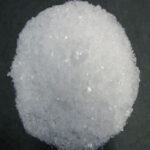 Argentum Nitricum
Argentum Nitricum
Thinks his understanding will and must fail. Fearful and nervous; impulse to jump out of window. Faintish and tremulous. Melancholic; apprehensive of serious disease. Memory weak. Errors of perception. Impulsive; wants to do things in a hurry (Lilium). Peculiar mental impulses. Fears and anxieties and hidden irrational motives for actions.
 Aurum Metallicum
Aurum Metallicum
Feeling of self-condemnation and utter worthlessness. Profound despondency, with increased blood pressure, with thorough disgust of life, and thoughts of suicide. Talks of committing suicide. Great fear of death. Peevish and vehement at least contradiction. Anthropophobia. Mental derangements. Constant rapid questioning without waiting for reply. Cannot do things fast enough. Oversensitiveness; (Staph) to noise, excitement, confusion.
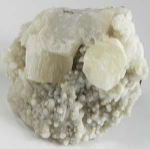 Baryta Carbonica
Baryta Carbonica
Loss of memory, mental weakness. Irresolute. Lost confidence in himself. Senile dementia. Confusion. Bashful. Aversion to strangers. Childish; grief over trifles.
 Baryta Muriatica
Baryta Muriatica
The different salts of Baryta are called for in organic lesions of the aged and dwarfish, both mentally and physically. Arterio-sclerosis and cerebral affections due to this condition. Headaches, but without acute crisis, occurring in old people; heaviness rather than pain. Hypertension and vascular degeneration.
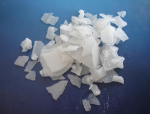 Causticum
Causticum
Sad, hopeless. Intensely sympathetic. Ailments from long-lasting grief, sudden emotions. Thinking of complaints, aggravates.
 Gelsemium Sempervirens
Gelsemium Sempervirens
Desire to be quiet, to be left alone. Dullness, languor, listless. “Discernings are lethargied. ” Apathy regarding his illness. Absolute lack of fear. Delirious on falling to sleep. Emotional excitement, fear, etc, lead to bodily ailments. Bad effects from fright, fear, exciting news. Stage fright. Child starts and grasps the nurse, and screams as if afraid of falling (Bor).
 Helleborus Niger (helleborus)
Helleborus Niger (helleborus)
Slow in answering. Thoughtless; staring. Involuntary sighing. Complete unconsciousness. Picks lips and clothes.
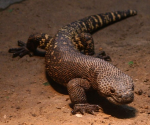 Heloderma
Heloderma
Very depressed.
 Lathyrus Sativus
Lathyrus Sativus
Depressed; hypochondriacal. Vertigo when standing with eyes closed.
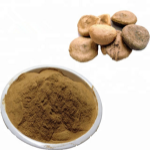 Nux vomica
Nux vomica
Very irritable: sensitive to all impressions. malicious. Cannot bear noises, odors, light, etc. Does not want to be touched. Even the least ailment affects her greatly. Disposed to reproach others.
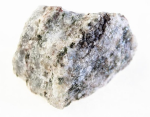 Phosphorus
Phosphorus
Great lowness of spirits. Easily vexed. Fearfulness, as if something were creeping out of every corner. Clairvoyant state. Great tendency to start. Over-sensitive to external impressions. Loss of memory. Brain feels tired. Restless, fidgety. Hypo-sensitive, indifferent.
Plumbum 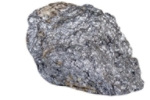 Metallicum
Metallicum
Mental depression. Fear of being assassinated. Quiet melancholy. Slow perception; loss of memory; amnesic aphasia. Intellectual apathy. Memory impaired (Anac; Baryta). Paretic dementia.
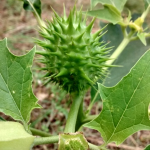 Stramonium
Stramonium
Devout, earnest, beseeching and ceaseless talking. Loquacious, garrulous, laughing, singing, swearing, praying, rhyming. Cannot bear solitude or darkness; must have light and company. Sight of water or anything glittering brings on spasms.
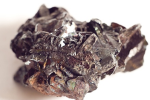 Zincum Met
Zincum Met
Weak memory. Very sensitive to noise. Averse to work, to talk. Melancholia. Lethargic, stupid. Paresis.
References
- Ralston S.H., Penman I.D., Strachan M.W.J., Hobson R.P. Davidson’s, Principles and Practice of Medicine. 23rd rev.ed. Edinburgh; Churchill Livingstone/Elsevier; 2018. 1417p.
- API Textbook of Medicine. 9threv.ed. Mumbai: The Association of Physicians of India, Jaypee Brothers Medical Publishers (P) Ltd; 2012. 2066p.
- Kasper D.L., Fauci A.S., Hauser S.L., Longo D.L., Jameson J.L., Loscalzo J. Harrison’s Manual of Medicine. 19th rev. ed.United States: McGraw Hill; 2016. 1222p.
- Boericke W. Pocket Manual of Homoeopathic Materia Medica. New Delhi: B. Jain Publishers (P) Ltd.; 2011.
